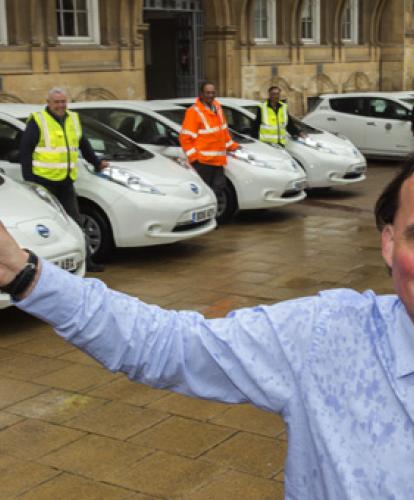Leicester City Council has taken delivery of ten new Nisan Leafs, with the all-electric vehicles set to go into service across the city. The move to zero-tailpipe transport sees the council replace part of an ageing diesel fleet as it aims to improve air pollution in the city.
Initially, the fleet of Leafs will be used a a range of council teams to check their suitability for all services, with a range of between 80 and 100 miles in real world driving conditions expected. The ten Leafs will be joined by a further five Nissan e-NV200 vans in the next few weeks.
new all-electric cars which will soon be put into service across the city. The ultra-low emission vehicles (ULEVs) will replace some the council’s ageing diesel fleet as part of the authority’s drive to cut air pollution in the city.
The 15 new EVs cost £287,000, and were purchased through the council’s spend to save budget. It includes the installation of charging points at council offices, depots and other key locations to maximise practicality. Each vehicle is expected to save around £1,000 per year in running costs compared to the older diesel models they will replace.
If a six-month trial of the new vehicles proves successful, the council will seek to replace a further 95 diesel vehicles with Ultra Low Emission Vehicle (ULEV) alternatives.
Cllr Adam Clarke, Assistant City Mayor for energy and sustainability, said: “Increasing the number of ultra-low emission vehicles on our roads is one of the agreed actions in the city’s plan to improve air quality of the next ten years. It is important that the council is seen to be leading the way by replacing our old diesel vehicles with clean, all-electric alternatives as far as possible.
“Putting these new all-electric vehicles into service across a wide range of council teams will give us the chance to thoroughly check their suitability for different uses. That will help determine how we roll this out in future months and years. We also hope it will encourage other organisations to do the same with their own fleet vehicles.”



